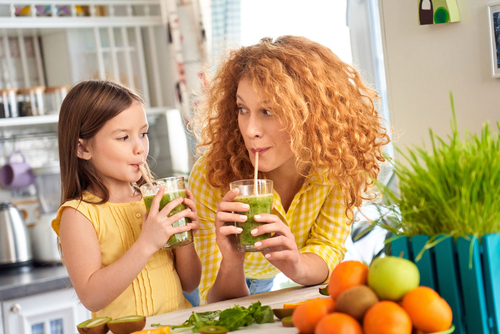
Smoothies can be a refreshing go-to beverage, but if you’re not careful, it’s very easy to create a sugar and calorie-loaded drink. Summit Health Registered Dietitian and Nutrition Services team member Lindsay Maurer says, “Stores often market colorful, fresh bowls and drinks as healthy meals or snacks made from fruits and vegetables. But if you glance at the nutrition facts, you’ll see that many contain upwards of 40 to 60 grams of sugar per serving.”
It is possible to make your own nutritious smoothie using a combination of protein, fiber, and healthy fat. Try these five tips from Lindsay for a satisfying snack or an on-the-go breakfast drink.
Tip #1: Stick to one cup of fruit
Fruit is a nutrient-dense, high-fiber carbohydrate food source. It provides us with a variety of vitamins, minerals, and antioxidants that help to reduce inflammation and keep our immune system thriving. But fruit also contains sugar, so it’s best to limit your intake to three servings per day, spread throughout the day. Adding one cup of any fresh or frozen fruit to your smoothie will provide hunger-fighting fiber and keep sugar content in check. How you fill that cup is up to you. For example, bananas and berries or mangoes and peaches make delicious combinations.
Tip #2: Incorporate lean protein
Protein is a nutrient that will make your smoothie more satisfying, while maintaining muscle in the body. If using after a workout, protein will help your muscles to recover. Include a ½ cup of Greek yogurt or a scoop of your favorite plant-based protein.
Tip #3: Get friendly with heart healthy fat
Healthy fats include nuts, nut butter, seeds, oils, and avocado. Fats help keep us full and satisfied after meals and stabilize blood sugars throughout the day. Incorporating one to two tablespoons of healthy fats can help reduce inflammation and keep you satiated longer. Nut butters and avocado add great taste and texture.
Tip #4: Add veggies
Don’t forget about nutrient-dense veggies. Add a big handful of spinach or kale for a fiber boost. Cucumbers and carrots give a fresh taste to your smoothie and offer a range of vitamins and minerals. Veggies may alter the color of your smoothie, but they rarely alter the flavor.
Tip #5: Smooth it out with some liquid
The texture of your smoothie will depend on how much liquid or ice you use. We typically recommend one cup of liquid to get the blender going. If you prefer a thicker smoothie (perhaps you like to eat it with a spoon), you will want to put in less liquid. If you like a looser consistency, you should use more liquid. Either way, low fat milk, dairy alternatives, and water make great low-sugar choices for liquid in your smoothies.
Using these tips, you can build a healthy, satisfying, nutrient-dense smoothie that can work as a quick meal or snack to get you through your day.
